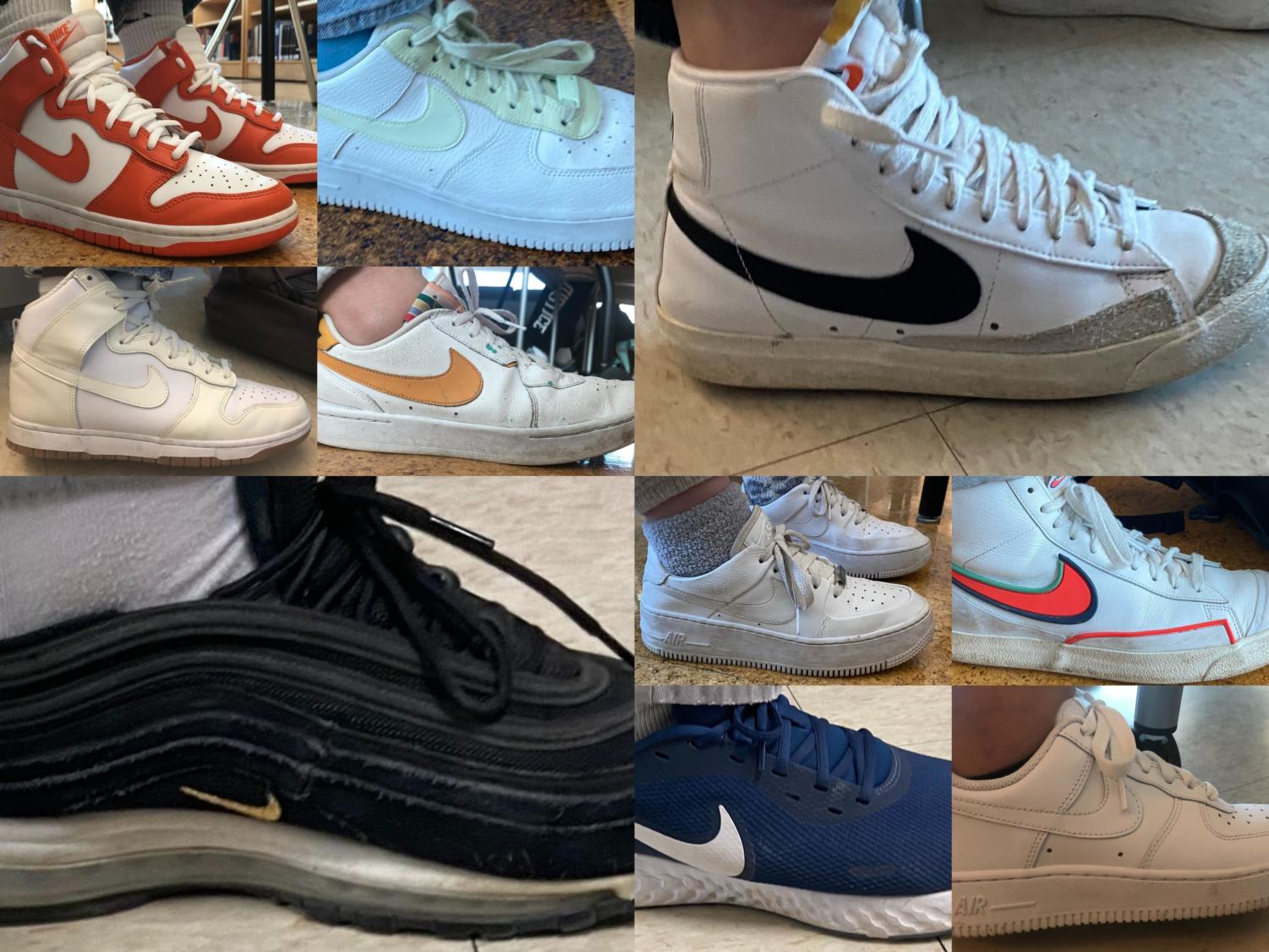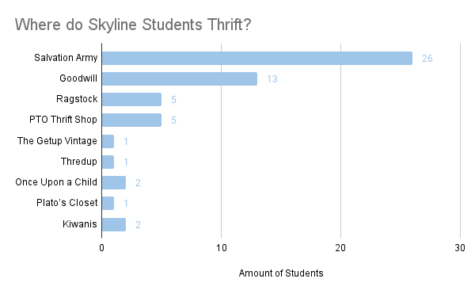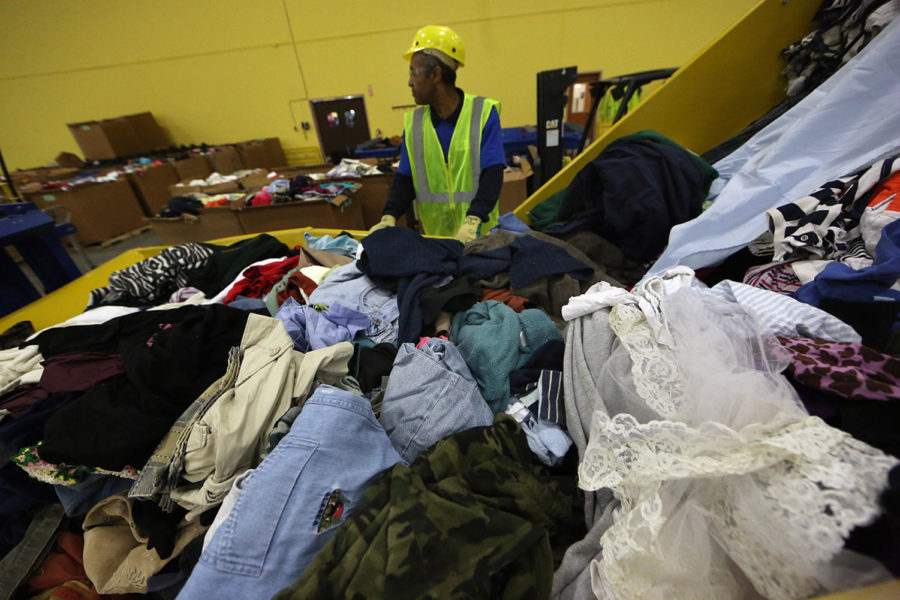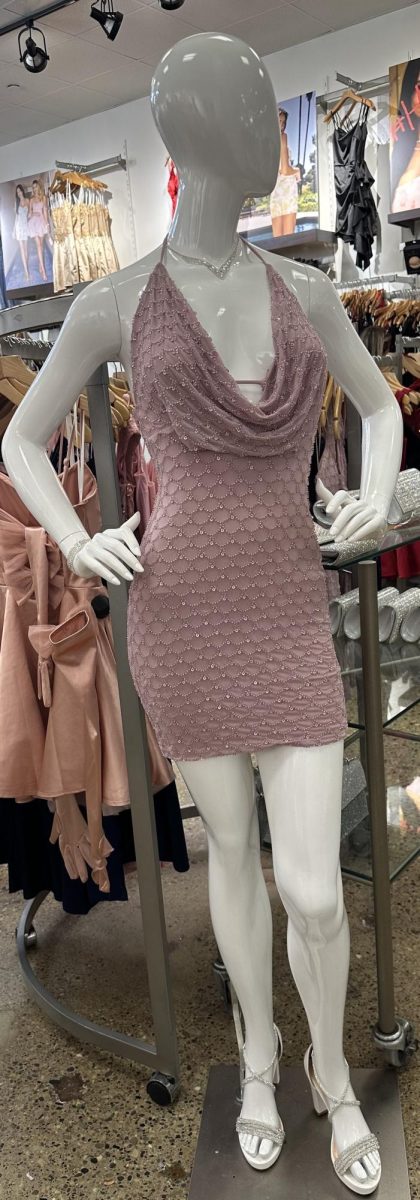Thirty pairs of Nikes — all found in a span of twenty minutes while in the Skyline library. With so much of one brand in one place, Nike seems to be popular among the Skyline student body. Trends like this one influence high schools, but the whole world is impacted. Fashion trends are circulating at an incredible rate among teens and young adults, resulting in a variety of negative effects.
The Skyline Post recently conducted a survey of 108 students about clothing habits at Skyline. 52.8% reported feeling overwhelmed by the range and amount of clothing trends. The other 47.2% reported the opposite. They didn’t feel the need to keep up with the trends due to the sheer amount and popularity of them. Skyline freshmen Mary Ellen Vance and Kaitlyn Preston were part of this minority. “No, I don’t feel overwhelmed about it at all,” said Preston. “There’s like a new trend every week, just, like, you can’t keep up with it.” Vance agreed, stating “I just, I get annoyed.”

One impact of fast-paced trends for big name manufacturers is the pressure to maintain relevant designs and keep up with the interests of the market. This forces manufacturers to cut corners in order to design and produce cheap new clothes quickly. Thus, the concept of fast fashion: a design, manufacturing, and marketing method that rapidly produces high volumes of clothing.
Manufacturers such as H&M, Zara, Boohoo, Shein, and Nike start their shortcuts at the materials used. Genetically modified cotton and other hazardous mediums are cheaper but aren’t good for the people wearing them or the environment. According to The Good Trade (October 2018), “Harmful chemicals
such as benzothiazole—linked to several types of cancer and respiratory illnesses—have been found in apparel on the market today. As our skin is the largest organ of the body, wearing these poorly made clothes can be dangerous to our health…brands like Boohoo, for example, use toxic chemicals, dangerous dyes, and synthetic fabrics that seep into water supplies.”
One extreme way these companies cut corners is through the inhumane treatment of laborers. Companies pay workers outrageously low wages rendering them unable to afford basic needs. According to The New York Times (December 2019), one sewing machine operator at Pinehurst Manufacturing in Honduras for major activewear brands said “[The pay] doesn’t cover everything. We live overdrawn. You have to stop buying certain things to cover the necessities.” According to The Times — the money simply isn’t enough — many Fast fashion companies are generally only focused on making a profit, despite the fact that their workers are negatively impacted.
The opposite of fast fashion is a process known as slow fashion. As defined by Forbes.com, slow fashion is “an approach to producing clothing which takes into consideration all aspects of the supply chain and in doing so, aims to respect people, the environment, and animals.” In sustainable fashion, clothes are meant to last much longer. For some, the cost of said clothes is an issue, but an especially popular way that Skyline students exercise slow fashion is via thrifting.
From our poll of Skyline students, the most popular thrift stores were the Salvation Army, Goodwill, and Ragstock. When asked “why do you thrift?” we received a wide range of responses from “because old clothes look tuff” to “bc clothes that are ‘in style’ are rlly expensive and the trends move so fast that it’s just not sustainable to follow all the new trends.”
One anonymous response encapsulated the general attitude: “I thrift because

it’s a cheaper, easier way to buy clothing without supporting huge businesses while also getting cute clothes.” This student highlights an essential point: everyone wants to be up to date on the trends in a changing world, but keeping up with trends and being environmentally friendly don’t have to be mutually exclusive.
Skyline students are slowly becoming more aware of the effects linked
to their consumption habits — such as pollution, illness, and poor worker treatment — which allows them to make better decisions. Skyline freshman Dawa Sherpa said it best: “Everyone is pressured into following these trends and they (social media) make it seem like this glorified lifestyle of always being on trend and always having the newest clothes to wear but they don’t take into account the effects it can have on the environment.”







